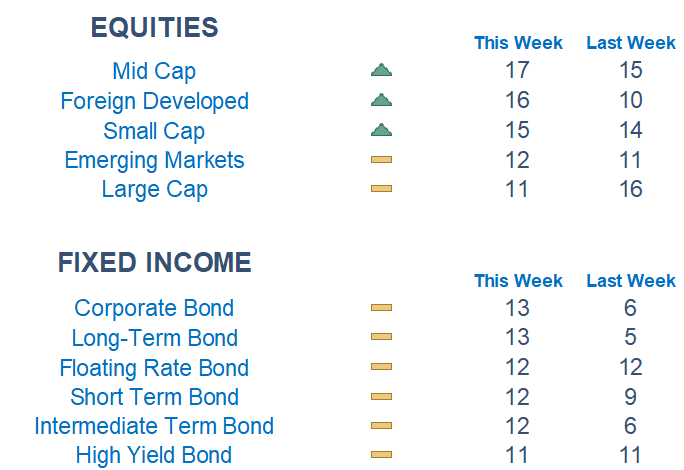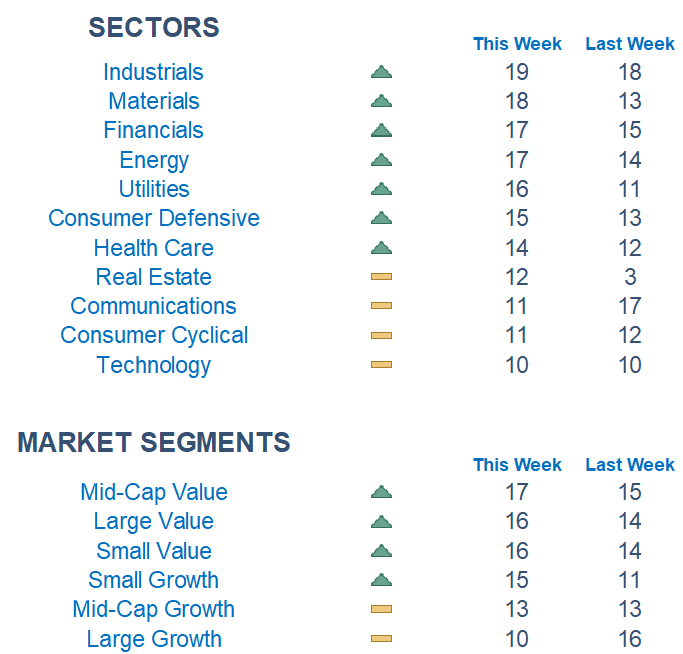As the first trading week of April unfolds, both bonds and stocks witnessed a decline prompted by increasing speculation around a more cautious approach to Federal Reserve interest rate cuts. This market sentiment is partially fueled by the surprising expansion in U.S. manufacturing activity, the first instance since September 2022.

This Week on Wall Street - Week of April 2nd
Market Commentary
As the first trading week of April unfolds, both bonds and stocks witnessed a decline prompted by increasing speculation around a more cautious approach to Federal Reserve interest rate cuts. This market sentiment is partially fueled by the surprising expansion in U.S. manufacturing activity, the first instance since September 2022.
In anticipation of Federal Reserve Chair Jerome Powell's speech on Wednesday, investors are parsing his recent remarks with interest. Powell emphasized the need for conclusive evidence of price stabilization before considering any reduction in interest rates, highlighting a cautious stance toward ensuring inflation is firmly under control. This approach underscores the unstable balancing act facing the Federal Reserve: the risk that premature easing could inadvertently stoke inflationary pressures, yet excessive delay may trigger an unexpectedly sharp economic downturn.
Amidst these financial deliberations, global geopolitical events also cast a shadow over market dynamics. Notably, the repercussions of an Israeli airstrike targeting the Iranian embassy in Syria have propelled gold prices to highs, signaling investor flight to perceived safe-haven assets amidst escalating tensions.
In economic news this week, we will get a lot of Fed Speak for more clues on where monetary policy might head. Notably, we will get the nonfarm payrolls report on Friday which is expected to show a slight decline in the growth of payrolls from +275,000 to +200,000.
We are seeing another rotation into value names as Large Cap is showing a decline in the rate of change. Bonds are seeing a slight change in direction, but still remain weak. Industrials, Materials, Financials, and Energy are the strongest sectors. Communications, Consumer Cyclical, and Technology - the three strongest sectors over the last year - are the laggards.
Economic Releases This Week
Monday: ISM Manufacturing, Fed Governor Lisa Cook Speaks
Tuesday: Job Openings, Cleveland Fed President Mester Speaks, San Francisco Fed President Daly Speaks
Wednesday: ADP Employment, ISM Services, Fed Chair Powell Speaks, Fed Vice Chair for Supervisions Barr Speaks, Fed Governor Kugler Speaks
Thursday: Initial Jobless Claims, US Trade Balance, Fed Speak: Philadelphia, Richmond, Chicago, Cleveland, and Minneapolis Presidents speak
Friday: US Nonfarm Payrolls, US Unemployment Rate, Consumer Credit, Richmond Red President Barkin Speaks, Dallas Fed President Logan Speaks
Stories to Start the Week
Israeli strike on Iran's consulate in Syria killed 2 generals and 5 other officers, Iran said.
Google agreed to destroy billions of data records to settle a lawsuit claiming it secretly tracked the internet use of people who thought they were browsing privately.
Former President Trump has posted a $175 million bond in the New York civil fraud case, preventing the seizure of his assets while the case is on appeal.
Canada's Niagara region has proactively declared a state of emergency ahead of a rare total solar eclipse on April 8th.

What is Newton?
Our Newton model attempts to determine the highest probability of future price direction by using advanced algorithmic and high-order mathematical techniques on the current market environment to identify trends in underlying security prices. The Newton model scores securities over multiple time periods on a scale of 0-20 with 0 being the worst and 20 being the best possible score. Trend & level both matter.


Technical trading models are mathematically driven based upon historical data and trends of domestic and foreign market trading activity, including various industry and sector trading statistics within such markets. Technical trading models, through mathematical algorithms, attempt to identify when markets are likely to increase or decrease and identify appropriate entry and exit points. The primary risk of technical trading models is that historical trends and past performance cannot predict future trends and there is no assurance that the mathematical algorithms employed are designed properly, updated with new data, and can accurately predict future market, industry and sector performance.
